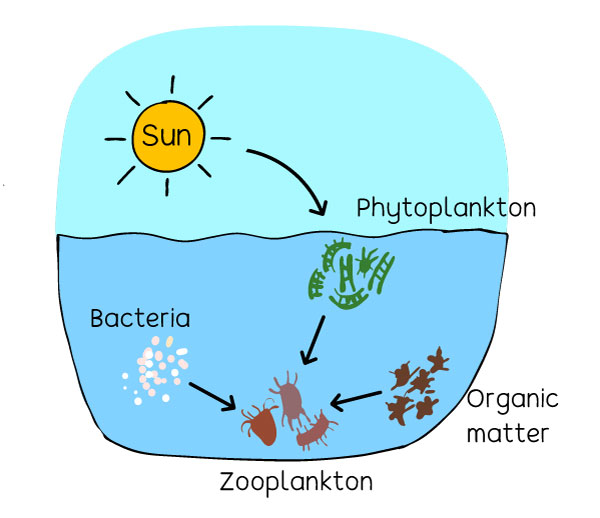- Aquatic Ecosystems
What is Plankton in aquatic ecosystems?
Plankton can be found in marine waters, although they can be found in many freshwater bodies too. This group of living organisms is described as tiny and microscopic plants and animals in the water. Plankton can exist in the sunlit zone and deep ocean waters. Plankton can be classified into two groups: Plants (phytoplankton) and animals (zooplankton).
Phytoplankton:
These microscopic plants produce food for other living things in the water. They are primary producers. They derive energy from sunlight to produce their food by photosynthesis. Examples include green algae and diatoms.
Zooplankton:
These are microscopic animals that live in the water. They are primary consumers and feed on phytoplankton and dissolved nutrients in the water. Herbivorous zooplankton feeds on phytoplankton. Carnivorous zooplankton also feeds on herbivorous zooplankton. Examples of zooplankton include some larvae of fish and crustaceans (includes crabs and shrimps).
In the basic food chain below, the sun provides energy for the phytoplankton. The zooplankton feeds on the phytoplankton, organic matter, and bacteria. Plankton may be unicellular or multicellular organisms. Plankton forms the basis of food chains in water. A healthy plankton community is therefore vital to the survival of water ecosystems. They do not dwell in any specific location in the water as they are constantly moving with the movement in the water. They are known as ‘drifters’ or ‘wanderers’.
Plankton may be unicellular or multicellular organisms. Plankton forms the basis of food chains in water. A healthy plankton community is therefore vital to the survival of water ecosystems. They do not dwell in any specific location in the water as they are constantly moving with the movement in the water. They are known as ‘drifters’ or ‘wanderers’.
An excessive bloom of plankton (or green algae) over a particular water body can block sunlight that enters it and can be harmful to the other lifeforms in that ecosystem. Water pollution and chemical spills into water bodies can affect the health of plankton.
